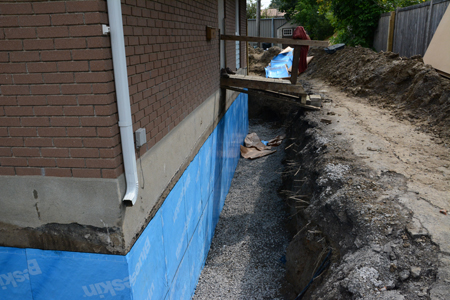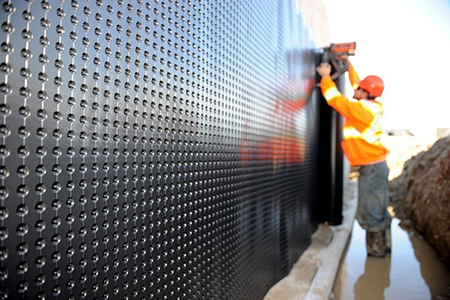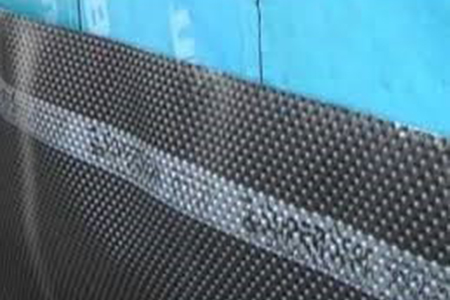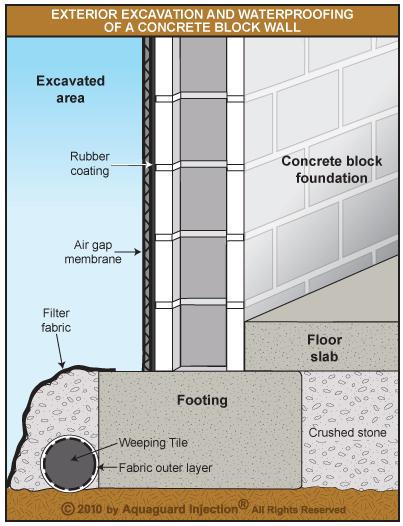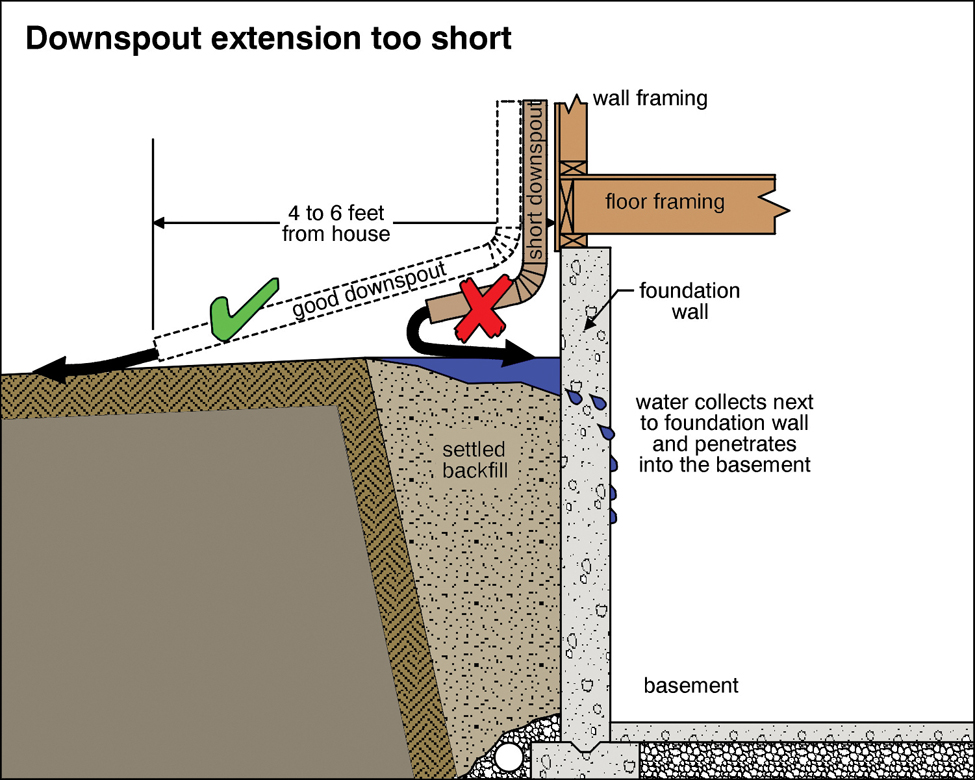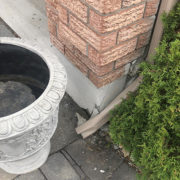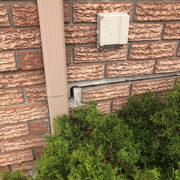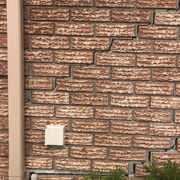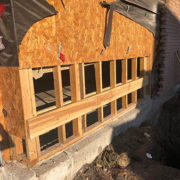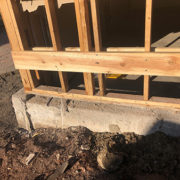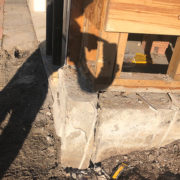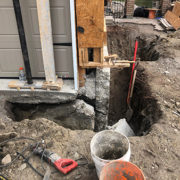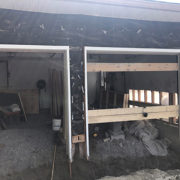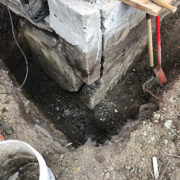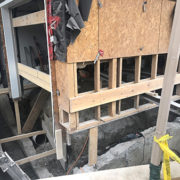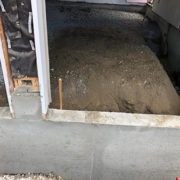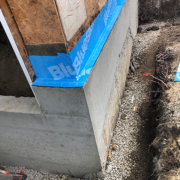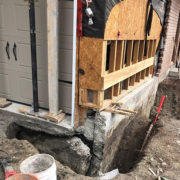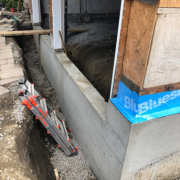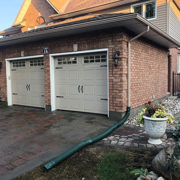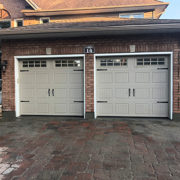Foundation Repairs and Waterproofing
A Damaged Foundation Leads to Structural Failure and Wet Basement
Small or large cracks in a foundation , improper drainage around the home collectively leads to structural failure and water entering the basement of the home.
In order to understand how water can enter your home through your foundation, it is important to know how a foundation is designed.
The fallowing pictures shows a typical foundation. In it you will see that the foundation is built on a stone base. Around the outside of the home below the level of the foundation is the weeping tile. Weeping tiles are perforated pipes that collect excess water. Generally these pipes are connected to your sump pump which pumps excess water buildup out of the home or to a stone pit .
On the exterior side of a concrete foundation is a waterproof membrane. In older homes the waterproof membrane was tar. Newer homes have plastic solutions such as Platon Foundation Wrap or Bleu Skin . Platon Foundation Wrap, is a hard plastic membrane , with its three dimensional profile it keep the membrane away from the foundation wall. This reduces hydrostatic pressure, caused by the surrounding soil expansion in winter due to frost.
Blue Skin is a solid piece of rubber that adheres to the side of the foundation using a primer/glue. Blue Skin is a rubberized asphalt compound on a polyethylene film. These are high performance waterproofing barriers that can be use separately or combined.
How does water enter through the foundation?
Water collects close to the foundation for a variety of reasons.
The grade of the soil around your home could have a negative grade, meaning sloping in toward your house, causing rainwater to collect around the foundation. Many foundation fail in the Ottawa region in late winter when the temperature suddenly rise . The melting snow turns into a liquid form and collects between the frozen ground and the foundation wall. Hydrostatic pressure force, drives the liquid through the fissure on your foundation wall .
Downspouts cause substantial losses to home owners. The primary function of a gutter and downspout is to collect and channel water away from the foundation. But many home owners think that their gutter system ends at the 6″ side elbow at the end of the down spout. This is not the case, the extender is the final and most important accessory to your gutter system , an appropriate extender will deliver the water at less 4′ to 6′ feet away from the home .In Ottawa , on your average rainy day the skies discharge on a 1200 sqft section of roof , 748 gallons or 2992 L of water. All this water will converge at the end of the downspout, without an extender this water settle’s at the corner of your home or garage.
By not having an extender on their downspout ,water will seeps in the ground, subsequently the wet ground freezes around the foundation. When the surrounding ground freezes, Heaving occurs .Heaving is a phenomena that occurs when the temperature of the earth cools causing the ground moisture to freezes and expands. Clay being prevalent in Ottawa does not help , due to its ability to retain water ,make it especially prone to heaving.
Now that the soil is frozen to your foundation the force created by the heaving process will crack your foundation.
It can start with a small crack behind the downspout. Every year the crack gets larger and larger. The liquid collects in the crack, freeze ,expand, melts, freezes again over and over year after year. These forces keep on separating the foundation wall , subsequently it will start pulling the bricks apart, creating large crack in your brick wall.
The constant repetition of the freezing and thawing cycles cause the crack to grow exponentially. This action is the most destructive factor in the weathering of a home.
